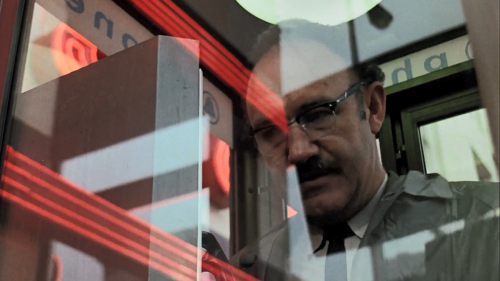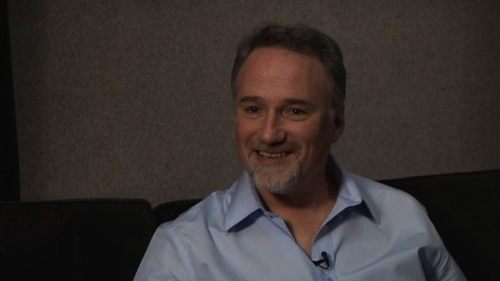Immortal Beloved: BRAM STOKER’S DRACULA At 25
At its heart, Bram Stoker's 1897 epistolary horror novel Dracula is an anti-immigrant text, written by an Irish author who was fearful of an exotic Other invading the United Kingdom and buying up all of its land - a probably coded screed against individuals of Eastern European Jewish descent, who were moving to England (where Stoker lived after marrying Florence Balcombe in 1878) en masse. However, none of that matters to Francis Ford Coppola, who instead zeroes in on the Gothic romance contained in the literary staple; a romanticized ideal of the bloodsucking Count, born from a mind once employed by Irving's Lyceum Theater. Never one to revel in convention, Coppola's take on Bram Stoker's Dracula is an experimental love letter to cinematic history, toying with light, shadow and washes of color, while Gary Oldman delivers another iconic iteration of the Transylvanian Count.
Working from a screenplay by James V. Hart (Contact ['97]), this sumptuous fable substantially updates Stoker's text while still remaining undeniably faithful. The work's a rather alluring balancing act between myopia and fidelity, eschewing the problematic peculiarities of the author's worldview while still attempting to maintain the wandering structure of letters, diary entries, and Captain's logs; shifting POV via a series of dissolves, super-impositions and hypnotic cross-fades. It’s easy to forget, given the number of filmic transmutations Dracula's endured throughout the medium's existence, that there isn’t a single romantic interaction between Dracula and Mina Harker (Winona Ryder) in the novel. The Count has zero interest in Jonathan Harker's (Keanu Reeves) fiancé beyond a desire to feast upon her plasma and turn her into one of his brides - another ugly byproduct of Stoker's prejudices. She's merely a predator's victim; while Coppola's lens adores Ryder and adopts a lover's gaze.
Obviously, Coppola wasn’t the first to introduce this romantic vampiric archetype, as Bram Stoker’s Dracula shares more than a few similarities to John Badham’s ’78 Frank Langella-starring take on the Prince of Darkness (though the sex scenes here are a bit steamier than the laser beam-enhanced lovemaking that renders that installment such an oddity). However, the emphasis on creating a sort of anti-hero in Oldman’s multi-faceted (not to mention omni-formed) re-invention of the legend places an emphasis on character study, just as much as Coppola’s in-camera old school SFX (masterminded by the auteur’s then-twenty-nine-year-old son, Roman) positions the picture in an aesthetic class entirely its own. All the sudden, we’re no longer watching the exploits of a soulless monster; but rather a haunted spirit, desperately fueling his journey through epochs in order to achieve a destiny of possessing the one he lost so long ago.
Coppola's always owned an experimental bent; coming out of the Corman genre factory (where he produced Dementia 13 [‘63]), stretching the low pulp of Mario Puzo’s pages into the high art of The Godfather trilogy (’73 – ’90), enduring near madness on Apocalypse Now (’79), and bankrupting himself on the overly ambitious set-bound musical One From the Heart (’81). However, Bram Stoker’s Dracula was – especially for the early ‘90s – an exceptionally audacious endeavor, as he abandoned the traditional look of a post-80s studio picture (when New Hollywood peers like Martin Scorsese were pushing their visual grammar to modern heights in pieces like Goodfellas [‘90]), and instead harkened back to a time period that relied on a purer form of cinematic trickery. The journey of Jonathan Harker from London to Castle Dracula sets the tone of how we’re almost floating through the director’s nightmarish reverie, as Roman’s homemade practicality combines with rear projection, model work and smoke machine plumes to create a rather ethereal unreality. The entire movie feels purposefully artificial and transportive; placing us inside the pages in a way no other version of Dracula ever has.
Coppola also seems to be acting as a sort of tour guide, leading you down the opulent hallways he's constructed (with the aid of cinematographer Michael Ballhaus) while gesturing to a collection of great works he's gathered and hung on its celluloid walls. This is a glittering arrangement of Art Nouveau, Gustave Klimt and Caspar Friedrich. Each and every frame is jammed with virtuosic detail and visual allusions; the soundtrack a cacophonous hodgepodge of portentous hissing, bubbly dialogue and Wojciech Kilar's operatic themes. It's a universe of smoke and mirrors that would cause George Méliès to blush; Coppola's eons of wine, blood and roses becoming a clandestine soirée you don't ever want to exit, as he continuously re-creates moving images from art house monster classics such as Nosferatu ('22), Vampyr ('32), Ivan the Terrible - Part(s) I + II ('45/ '58), and Beauty and the Beast ('46), all while production designer Thomas Sanders evokes the faux Victorian plasticity of '60s Hammer Horror.
Beyond the commitment to pure artiface that Coppola injects into the picture's proceedings, Bram Stoker's Dracula is also an intensely erotic affair. Sex and death have always gone hand-in-hand in horror cinema (especially when dealing with the vampire subgenre), but Coppola descends into a near fetishistic level of fleshy fantasy. Jonathan Harker's initial encounter with the Count's Brides (Monica Bellucci, Michaele Bercu and Florina Kendrick) literally swoons and swells on screen, as the flowing bed gives way to emerging bodies that intertwine; mouths, tongues, arms, legs, breasts and chests meeting before Dracula shoos them away, claiming the pretty bewildered boy for his own. Lucy Westenra (Sadie Frost) is a delightful tease, giggling with Mina after dropping a copy of the Kama Sutra before stroking the Bowie knife of her Texan suitor Quincey P. Morris (Billy Campbell), telling him she can't believe how big it is. Like the Prince of Darkness, these are all creatures of desire, their bodices bursting at the seams as the women can't wait to jump into bed with their men.
However, no matter how perpetually horny the picture is, Coppola transmutes the prejudiced fears that Stoker injected into his novel, updating anxieties for a post-80s AIDS epidemic that no doubt partially accounted for the movie's surprising (and frankly baffling - at least to industry insiders at the time) financial success. Lucy's sexually charged encounter with the beast leads to her withering away due to a blood disease no one can define. "Civilization, and syphilization, have advanced together," Prof. Van Helsing (Anthony Hopkins) lectures to a hall of colleagues when we first meet, before rushing off to Lucy's bedside, performing transfusions with the aid of her chosen Lordly love (Cary Elwes), while knowing in his heart that the desecration of her body is due to her meeting his white whale - the ultimate blood pathogen - Master Vampyr, Dracula.
Bram Stoker's Dracula was released seven years after the death of All That Heaven Allows ('55) star Rock Hudson (one of the first gay icons to publicly announce he was dying from AIDS), and five from the initial publication of Randy Shilts' And the Band Played On. While initially labeled a "gay plague" by the straight media (thus playing into Shilts' thesis that the disease spread mainly due to apathy and fear), by '92 HIV and AIDS were known to be diseases of both blood and sex that was no longer contained to a marginalized community. Anyone could get it; and while sharing needles or accidentally receiving a transfusion from the wrong donor were part of the worldwide paranoia, it was still a deadly contagion mainly linked to unprotected, promiscuous sex. So, when Coppola superimposes microscopic footage of platelets flowing over Mina's face while she considers Lucy's inevitable fate, the fact that she slept with the wrong man is permanently burned into the audiences' subconscious. Where Stoker used the vampire as a racist metaphor, Coppola weaves a phantasmagorical sex panic parable that led to box office gold, not-so-inadvertently exploiting a global pandemic.
Yet none of this would even matter if it weren't for Gary Oldman, who rips the monster away from the likes of Bela Lugosi and Christopher Lee, rejiggering the creature into a multi-faceted monster. Often buried beneath layers of prosthetics and wigs - be it in the form of an undead aristocrat, bat-man, or hairy wolf - Oldman adopts an Eastern European affectation that's drenched in inescapable melancholy. His Dracula is a ghost who sees immortality as a curse, bestowed upon him by a vengeful God after he desecrated His Church. As inherently piteous as any Shakespearean tragedy case, Oldman approaches every scene with the perfect mixture of high-wire seriousness and grandiose camp. It's a marvel of a turn; iconic for a reason, and totally removed from any iteration of the Count that's ever been committed to screen before or since.
When discussing the career of Francis Ford Coppola, many critics and historians (rightfully) jump to The Godfather trilogy, The Conversation ('74) and Apocalypse Now. Yet Bram Stoker's Dracula ranks with the greatest accomplishments of his lifetime. Coppola somehow convinced a major studio to help unleash this experimental vision of terror onto an unsuspecting public and ridiculing establishment (the somewhat troubled production had become a punchline leading up to its November '92 release). The result is an utter triumph, breathing new life into a crusty, tired text that simultaneously holds a mirror up to some of the era's greatest fears. Like the Count, Stoker's text crossed oceans of time, only to have Coppola use it as a springboard for his most radical aesthetic impulses, manufacturing one of the 90s' defining pieces of cinema.



